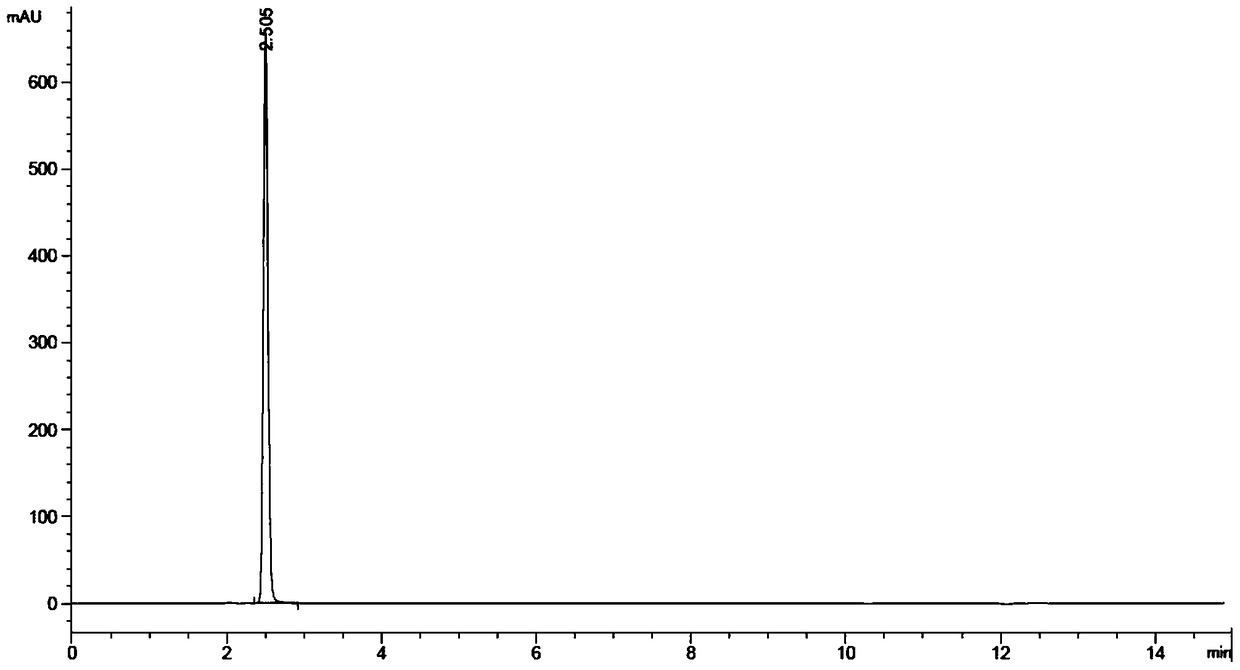A kind of method and application of in vitro enzyme reaction synthesis phloroglucinol
A phloroglucinol, in vitro enzyme technology, applied in the field of bioengineering, can solve problems such as increasing the cost of the production process
- Summary
- Abstract
- Description
- Claims
- Application Information
AI Technical Summary
Problems solved by technology
Method used
Image
Examples
Embodiment 1
[0033] The in vitro reaction of enzymes related to phloroglucinol synthesis and metabolism, the specific steps are as follows:
[0034](1) Take 100ml of Escherichia coli culture fluid expressing acetyl-CoA synthetase, 4 subunits of acetyl-CoA carboxylase, and polyketide synthase at 6000rpm, centrifuge at 4°C for 5min, discard the supernatant, and wash with 50mM, pH 7.4 phosphoric acid Wash twice with salt buffer, and finally use 5ml phosphate buffer to resuspend; then use ultrasonic breaker (20kHz, 60w, 20min), centrifuge at 13000rpm4°C for 20min after breaking, separate the supernatant from the precipitate, keep the supernatant, and use test Protein content was determined by the Mas Brilliant Blue binding assay kit. The enzyme liquid was purified by nickel column from Novagen, the target protein was collected, and the protein content was determined. The mass ratio of the four subunits of the purified acetyl-CoA carboxylase is compounded according to the ratio of accA:accB:ac...
Embodiment 2
[0038] Using the in vitro reaction of enzymes to determine the key enzymes in the synthesis and metabolism of phloroglucinol, the specific steps are as follows:
[0039] (1) Take 100ml of Escherichia coli culture fluid expressing acetyl-CoA synthetase, 4 subunits of acetyl-CoA carboxylase, and polyketide synthase at 6000rpm, centrifuge at 4°C for 5min, discard the supernatant, and wash with 50mM, pH 7.4 phosphoric acid Wash twice with salt buffer, and finally use 5ml phosphate buffer to resuspend; then use ultrasonic breaker (20kHz, 60w), centrifuge at 13000rpm4°C for 20min after breaking, separate the supernatant from the precipitate, keep the supernatant, and use Coomassie brilliant blue Binding assay kits were used to determine protein content. The enzyme liquid was purified by nickel column from Novagen, the target protein was collected, and the protein content was determined. The mass ratio of the four subunits of the purified acetyl-CoA carboxylase is compounded accordi...
PUM
 Login to View More
Login to View More Abstract
Description
Claims
Application Information
 Login to View More
Login to View More - R&D
- Intellectual Property
- Life Sciences
- Materials
- Tech Scout
- Unparalleled Data Quality
- Higher Quality Content
- 60% Fewer Hallucinations
Browse by: Latest US Patents, China's latest patents, Technical Efficacy Thesaurus, Application Domain, Technology Topic, Popular Technical Reports.
© 2025 PatSnap. All rights reserved.Legal|Privacy policy|Modern Slavery Act Transparency Statement|Sitemap|About US| Contact US: help@patsnap.com


